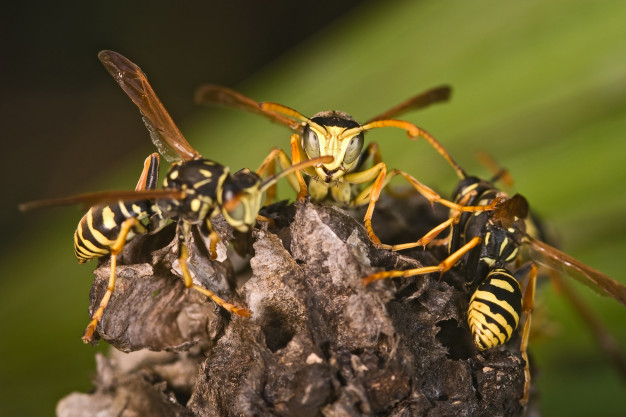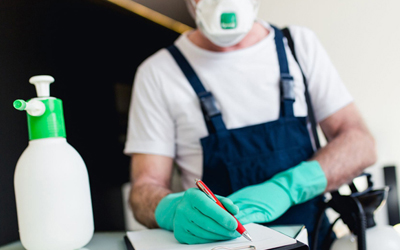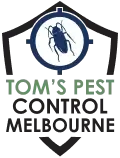Prompt, Affordable Same-Day Pest Control in Melbourne – From $129.
- Home
- Pest Treatments
- Termite Inspection & Treatment
- Ant Pest Control
- Bed Bug Treatment
- Beetle Pest Control
- Bird Proofing
- Borer Pest Control
- Cockroach Control
- Flea Treatment
- Fly Control
- Fox Trapping
- Mites Control
- Mosquito Pest Control
- Moth Control
- Possum Removal Service
- Rodent Control
- Silverfish Treatment
- Spider Control Treatment
- Wasp Control Services
- End of Lease Pest Control
- Commercial Pest Control
- Office Pest Control
- Restaurants & Cafes Pest Control
- Hospitality Pest Control
- Education Facilities Pest Control
- Hospital & Aged Care Pest Control
- Pest Control Food Industry
- Factories & Warehouses Pest Control
- Government Buildings Pest Control
- Assets & Facilities Pest Management
- Farming and Agriculture Pest Control
- Strata Pest Control
- Construction Pest Control
- Termites
- Pest Info
- Pest Inspections
- Contact
- Home
- Pest Treatments
- Termite Inspection & Treatment
- Ant Pest Control
- Bed Bug Treatment
- Beetle Pest Control
- Bird Proofing
- Borer Pest Control
- Cockroach Control
- Flea Treatment
- Fly Control
- Fox Trapping
- Mites Control
- Mosquito Pest Control
- Moth Control
- Possum Removal Service
- Rodent Control
- Silverfish Treatment
- Spider Control Treatment
- Wasp Control Services
- End of Lease Pest Control
- Commercial Pest Control
- Office Pest Control
- Restaurants & Cafes Pest Control
- Hospitality Pest Control
- Education Facilities Pest Control
- Hospital & Aged Care Pest Control
- Pest Control Food Industry
- Factories & Warehouses Pest Control
- Government Buildings Pest Control
- Assets & Facilities Pest Management
- Farming and Agriculture Pest Control
- Strata Pest Control
- Construction Pest Control
- Termites
- Pest Info
- Pest Inspections
- Contact
Home » Wasp Control Melbourne
Wasp Control Melbourne
If yes, you can count on our professional wasp pest control services in Melbourne. At Tom’s Pest Control Melbourne, we have several years of experience in providing safe wasp treatment services for the homes and commercial spaces of Melbourne.
Regardless of the size of the wasp nest and the extent of the infestation, we can remove the wasps from your property without causing any harm or hassle to you, your family, and your neighbours.
Book Your Wasp Control Services Here
List Of Wasps In Australia
- European wasp
- English wasp
- Honey bee
- Social wasp
- Mortar bee
- Carpenter bee
Why Is An Extermination Important?
- Wasps are not a friendly insect, and even the slightest bump can alert and make them attack people around them.
- The stings are highly painful and may demand quick medical treatment. Based on the size of the nest and the number of wasps, they can attack hundreds of people at a time.
- Compared to a bee, wasps can sting several times and even attack people who are passing their nests.
- They attack in packs and that can be deadly
- Some people may find themselves allergic to wasp stings, and they may trigger severe reactions that need immediate medical attention.
Are you worried? Just contact Tom’s Pest Control for an immediate extermination service. We have wasp suits, modern tools, and well-trained extermination specialists to make your property and surrounding area free of the risks of wasps.

Our Wasps Nest Removal Treatment
Wasp Treatment Inspection
We will also analyse the possible factors that encouraged the wasps to make the nest near your property.
Wasp Pest Control Treatment Plan
The treatment plan will be explained to you before we start with the treatment and ensure that you are receiving a transparent, hassle-free service from us.
Extermination Process
At Tom’s Pest Control, we are always focused on the health and wellbeing of our customers and choose only approved chemical sprays and products.
Ongoing Prevention
However, the following general tips can help you to reduce the chances of reinfestation:
- Discourage wasps by removing foods scraps and fallen fruit regularly from your property premises.
- Avoid leaving pet food outside.
- Keep rubbish dustbins tightly covered with lids.
- Always cover exposed food and compost to avoid wasp infestation.
- Keep the swimming pool covered when not in use.
- Keep your yard well maintained by trimming your trees and shrubs and mowing the grass.
- Regularly monitor your property for any wasp infestation.
Why Tom’s Pest Control?
- Same/next day wasp removal services
- APCA and TAFE-certified wasp control technicians
- Treatment and removal of nest, swarm, and hive
- Local termite control teams
- Upfront quotes, comprehensive prices
- 100 percent satisfaction guarantee

FAQs
How Do You Stop Wasps From Building Mud Nests?
Anaphylactic shock and severe pain are outcomes of a wasp assault. The self-assured homeowner can remove wasp nests but using the right materials and safety gear is crucial.
Large solitary wasps are found near water sources (where they can access mud). They create cells out of the mud, filling them with a paralysed bug or spider and an egg. Before emerging from the mud cell, the larva leaves the egg, consumes the insect, and changes into an adult. In protected regions, walls and ceilings frequently have these mud chambers.
Any residual pesticide with a wasp’s label can be sprayed on the nearby surfaces and the mud nests. However, to guarantee that the pesticide reaches the larva within the mud cell, it is crucial to ensure that the mud nest is completely submerged. For guaranteed wasp removal, contact Tom’s Pest Control Melbourne.
How Much Does Wasp Extermination Cost?
Costs for removing a basic, little nest of wasps begin at $120. However, the fees might exceed $300 for wasps that are aggressive or difficult to get.
You may wonder how difficult it is to get rid of some wasps. But, if you choose to take on these terrible parasites by yourself, they could become your immortal final words. Wasps can detect even the smallest motions because of their exceptional vision.
These behaviours might indicate that bugs or insects are around and prepared to strike. They can also detect predators like birds thanks to their keen eyesight. Birds frequently dive on nests to feast on wasp larvae that are hidden inside the nests.
What Are Some Ways To Eliminate Wasps And Feral Bees?
Colonies might be found underground or within the confines of your house. Wasps can be killed using sprays, bait, or attempting to remove the nest. However, it would help if you didn’t ever dismantle a nest by striking it with a bat or another object or kicking it down.
Consult a professional to remove a nest if it is underground or within your home. Never try to get rid of the nest yourself. You might hurt yourself and the people around you if you attempt to remove a wasp nest on your own.
Take extra care to shield your eyes and face if you want to enter the nest more readily. When wasps are less active in the dark or morning, approach the nest.
Which Wasp Species Are Most Prone To Nest Inside Homes?
In the summer, a single nest may contain thousands of wasps, and as their population grows, wasps become more hostile. This is why removing a nest at an early stage is significantly simpler. Diverse types of wasp species are responsible for creating a nest inside your house. They are as follows: –
- Paper wasps
- Yellowjackets
- Bald-faced hornets
- Mud daubers
Make sure to preserve your distance from the nest and not disrupt it if you come across it. Engaging a professional to assist you in getting rid of it is recommended because trying to do it alone could be risky. Contact us if you need someone to take care of a wasp nest on your property.
Wasps Are Everywhere, Yet I Can't Find Their Nest. What Should I Do?
Most wasp nests have a papery look. It is because each species of wasp builds its own nest. Therefore, to keep wasps at bay, it is advisable to know which wasp species live there.
- Paper wasps create a grey, papery umbrella-like canopy with exposed honeycomb-like cells. There is the usual source of these outside houses, such as beneath eaves, awnings, windowsills, and deck railings.
- Yellow jackets build nests in small cavities that are tan. They are found in sandy lawns, rotten logs, attics, and home and building wall cavities.
- European hornets have a smooth, papery nest that is circular with a slightly pointed bottom and one large aperture. A wasp nest is large enough to accommodate up to 1,000 wasps. The hornets are larger and have pale yellow abdomen.
If you observe any of the above signs of a nest, it is better to contact Tom’s Pest Control Melbourne experts.
What Type Of Pest Control Is A Parasitic Wasp?
Before developing chemical pesticides, farmers relied on native predators to manage pests that had destroyed their crops for millennia. However, this method is currently seeing a modern resurgence.
Major parasitic wasps must lay eggs inside other insects to complete their life cycle. Both indigenous pests and invading species can be managed with the help of parasitic wasps. Wasps often have tiny, unremarkable bodies.
Gnat-sized parasitic wasps called Fly Eliminators are employed to biologically eliminate flies in and around homes, farms, and livestock facilities. Fields and gardens, especially those with plants that produce nectar, pollen, and draw parasitic wasps, are usual places to find these wasps.
How To Tell The Difference Between Wasps And Bees?
Because of their similar shapes, wasps and bees frequently get mixed up. Bees, however, have a less distinctive light brown/yellow colour. In contrast, wasps have conspicuous yellow/black stripes across the abdomen. Also, because they are social insects, honeybees’ dwell in nests that can include thousands of workers.
If you are unsure whether there is a wasp’s or bee’s nest, carefully inspect the brickwork to determine whether they are entering or exiting a single hole or air brick. Wasps will have only one hole, while mortar bees will inspect multiple.
Honeybees are gentle creatures. They die due to stinging and swarms in either spring or summer. At the same time, wasps have an aggressive personality. It stings frequently and easily. Also, common in late summer but does not swarm.

